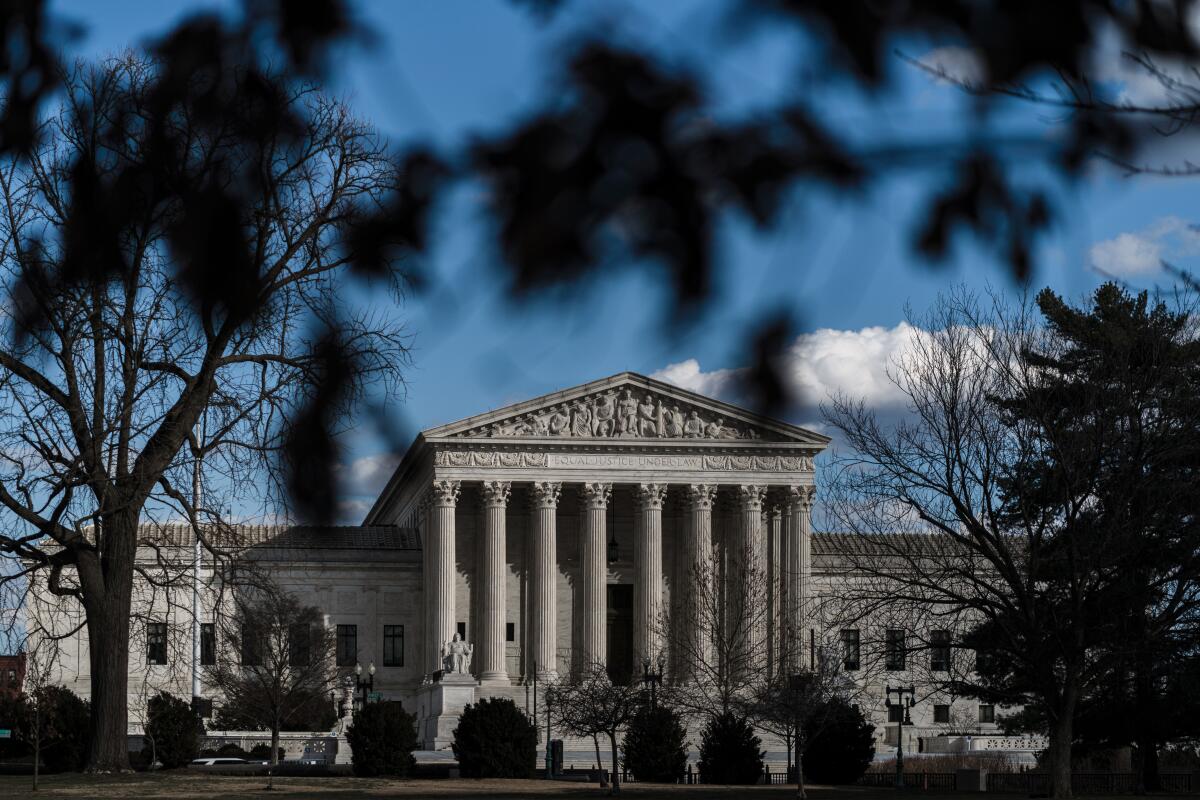Supreme Court will hear Republican state lawmakers’ bid for more power over elections

- Share via
WASHINGTON — The Supreme Court agreed Thursday to hear a major election case and decide whether North Carolina’s Republican lawmakers have the power to draw a partisan election map without interference from state judges.
At issue is a potentially far-reaching shift in election law, one that could affect congressional and presidential elections.
In the wake of President Trump’s loss in the 2020 election, Republican lawmakers in several states flirted with the idea that they had the power to ignore the vote tally in favor of Joe Biden and instead choose their own slate of electors, who would vote to reelect Trump.
The case of Moore vs. Harper does not go that far, but it asks the court to uphold the notion that the state legislators have the sole and “independent” authority to set the rules for federal elections in their states, without interference or oversight by the governor or state judges.
This is referred to as the “independent state legislature” doctrine. Its basis, according to GOP lawyers, is the provision in the Constitution that says the “manner of holding elections for senators and representatives shall be prescribed in each state by the legislature thereof.”
In the past, it has been understood that while legislators set the rules for elections — including drawing the map of congressional districts — the governor, state supreme court and voters can also play a role.
The U.S. high court adopted that broader view in 2015, but it was a 5-4 decision. The majority ruled against Arizona’s Republican-controlled Legislature and upheld a ballot measure approved by the voters that created an independent commission to draw the election districts.
Justice Ruth Bader Ginsburg wrote the court’s opinion, which was joined by Justice Anthony M. Kennedy, while Chief Justice John G. Roberts Jr. and Justices Clarence Thomas and Samuel A. Alito Jr. dissented.
In March, Thomas and Alito called for revisiting the issue in the North Carolina case, and they were joined this time by Justices Neil M. Gorsuch and Brett M. Kavanaugh.
Last year, the North Carolina Legislature drew a new map of congressional districts that is widely expected to elect a Republican in 10 of 14 districts, even if the voters statewide split about evenly between Republicans and Democrats.
The North Carolina Supreme Court rejected the map as unconstitutional in February. Its justices, a majority of whom were Democrats, said the General Assembly does not have “unlimited power to draw electoral maps that keep themselves and our members of Congress in office as long as they want, regardless of the will of the people, by making some votes more powerful than others. ... We hold that our constitution’s Declaration of Rights guarantees the equal power of each person’s voice in our government through voting in elections that matter.”
It ordered a redrawn map that is expected to give Democratic candidates a good chance of winning six of the 14 seats.
In March, the Supreme Court turned down a GOP appeal seeking to block the use of the revised map in this year’s elections because it was too late to make additional changes before this year’s election.
But Kavanaugh said at the time that it was important for the justices to hear arguments on the issue in the fall and decide early next year whether state legislators have the sole authority to set the rules for federal elections in their states.
It’s not clear how the chief justice will view the issue now. Three years ago, he wrote a 5-4 decision that threw out a federal court ruling that struck down an earlier highly partisan election map for North Carolina. It gave GOP candidates a clear edge in 10 of 13 congressional districts.
Roberts said federal judges had no authority to decide when an election map was too partisan and that such disputes could be brought in state courts. That in turn helped trigger the litigation that led to the state supreme court ruling that is now being challenged.
More to Read
Get the L.A. Times Politics newsletter
Deeply reported insights into legislation, politics and policy from Sacramento, Washington and beyond. In your inbox three times per week.
You may occasionally receive promotional content from the Los Angeles Times.











